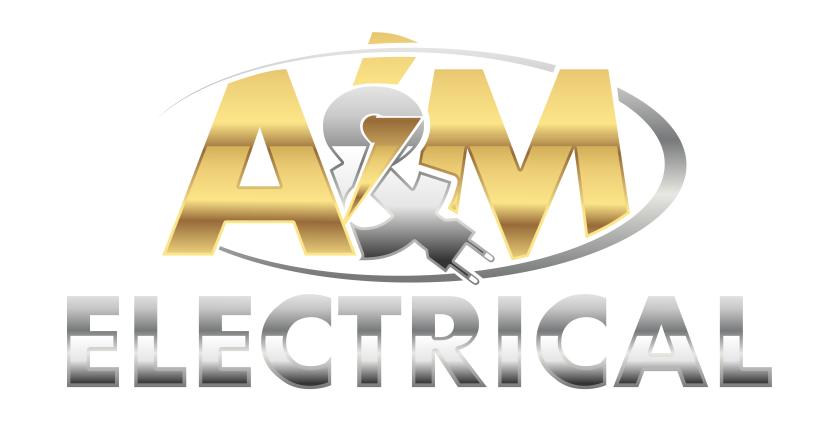Dads Need a Multimeter
Aaron Wham • June 14, 2024
How a Multimeter Can Be Invaluable to Dads
For many dads, maintaining a home is a never-ending series of tasks and challenges. From fixing appliances to troubleshooting electrical issues, having the right tools is essential. One often overlooked but incredibly useful tool for any homeowner is the multimeter. This versatile device can make many common household tasks simpler, safer, and more efficient.
A multimeter is an electronic measuring instrument that combines several measurement functions in one unit. It can measure voltage, current, and resistance, and some advanced models can even test for continuity, capacitance, and temperature. Here’s why every dad should consider adding a multimeter to their toolkit:
1. Troubleshooting Electrical Issues:
Whether it’s a faulty outlet, a malfunctioning light fixture, or a tripped circuit breaker, electrical problems can be daunting. A multimeter allows you to safely check for voltage and continuity, helping you pinpoint the source of the issue quickly. This can save you time and money by avoiding unnecessary electrician visits for minor problems.
2. Testing Batteries:
From TV remotes to children's toys, batteries are everywhere in a household. A multimeter can check the voltage of batteries, letting you know if they are still good or need replacing. This helps ensure your devices are always running smoothly and prevents the frustration of dealing with dead batteries.
3. Checking Appliance Functionality:
If an appliance isn’t working correctly, a multimeter can help diagnose the problem. By measuring the voltage at various points, you can determine if the issue lies with the appliance itself or with the power supply. This knowledge can be invaluable when deciding whether to repair or replace an appliance.
4. Home Renovations and DIY Projects:
For dads who love DIY projects, a multimeter is indispensable. When installing new electrical outlets, lighting fixtures, or other electrical components, a multimeter ensures everything is connected correctly and safely. It’s a vital tool for preventing potential electrical hazards.
5. Automotive Repairs:
Beyond the home, a multimeter is also useful for car maintenance. It can diagnose issues with the battery, alternator, and other electrical components, making it a versatile tool for the garage as well.
In conclusion, a multimeter is a must-have tool for any dad who takes pride in maintaining and improving his home. Its ability to diagnose and troubleshoot a wide range of electrical issues makes it an invaluable addition to any toolbox. Investing in a good quality multimeter can pay for itself many times over by saving time, money, and ensuring the safety and functionality of your home’s electrical systems.
In celebrating our dads this Sunday, consider getting him one of these tools if he doesn't have one. If you need a professional (more than Dad can handle), give us a call at 940-390-7606.

Electricity has come a long way since the days of simple switches and light bulbs. Today’s modern electrical innovations don’t just make our homes more convenient — they make them safer, smarter, and more efficient than ever. Here are a few upgrades worth considering if you want to bring your home into the 21st century. 1. AFCI and GFCI Protection Let’s start with safety. Arc-Fault Circuit Interrupters (AFCIs) and Ground-Fault Circuit Interrupters (GFCIs) are designed to prevent two of the most common household dangers — electrical fires and shocks. AFCIs detect dangerous arcing in wiring (a major cause of house fires) and shut off power before a spark becomes a flame. GFCIs protect you from electrical shock near water sources like kitchens, bathrooms, and outdoor outlets. If your home is more than 20 years old, it’s worth having your outlets and breakers checked to ensure you have these life-saving devices installed where they’re needed. 2. Whole-Home Surge Protection With all the smart devices, TVs, and appliances we rely on, a power surge can do more than trip a breaker — it can fry your electronics in a split second. A whole-home surge protector, installed at your electrical panel, adds a critical layer of defense. Think of it as a seatbelt for your home’s wiring system. 3. Smart Switches and USB Outlets Smart switches let you control lights and ceiling fans with your voice or phone, adding both convenience and energy savings. And those new USB outlets? They’re a game changer for modern households. No more searching for adapters — just plug in and charge directly from the wall. 4. LED Lighting and Motion Sensors LED technology has revolutionized home lighting with lower energy use, longer lifespans, and cooler operation. Pairing LEDs with motion sensors adds another level of efficiency — lights that turn off automatically when you leave a room save energy and extend bulb life. At A & M Electrical Services, we help Corsicana homeowners update, protect, and modernize their homes safely and affordably. Whether you’re upgrading outlets, improving lighting, or adding smart controls, our licensed electricians can help bring your home up to speed. 📞 Call or text us at 940-390-7606 to schedule a consultation — and see how a few small upgrades can make a big difference in your comfort and peace of mind.

Fall is finally here — the season of pumpkin spice, cozy evenings, and porch decorations that make your neighbors smile. Whether you’re going for classy autumn ambiance or a full-blown Halloween spectacular, electricity can take your décor from “nice” to “next level.” Here are a few fun ways to safely light up your fall. 1. Glowing Pumpkins Carving is great, but if you want your pumpkins to shine longer, try LED puck lights or battery-powered fairy lights inside instead of candles. They’re safer, reusable, and give off a warm, even glow. Bonus: You can set them on timers so they flicker on automatically when the sun goes down. 2. Porch Light Upgrade Your front porch is the stage for your fall display — so give it some spotlight love. Swapping out your standard bulbs for amber-hued LEDs adds instant autumn charm. Or, if you want a little spook factor, smart bulbs let you change colors for Halloween night and then switch back to a welcoming glow for Thanksgiving. 3. Electric Garlands and Pathway Lights Wrap string lights around railings, shrubs, or your favorite fall wreath. For a little extra flair, run low-voltage pathway lighting to guide trick-or-treaters safely to your door. Just make sure your cords and plugs are outdoor-rated — wet weather and standard extension cords are not a happy couple. 4. Powered Porch Props If you love animatronics, fog machines, or moving decorations, be sure your circuits can handle the load. Overloading outlets or daisy-chaining power strips is a fast track to blowing a fuse — or worse. A licensed electrician (like us!) can check your circuits and add outdoor GFCI outlets for safe, reliable power. As you plan your fall display, remember: a little creativity plus the right electrical setup equals a home that’s as bright and festive as the season itself. If you’d like help adding outlets, upgrading porch lighting, or ensuring your fall décor is safe and spark-free, call A & M Electrical Services at 940-390-7606 — where safety and style go hand in hand.

⚡ Fall Football, Texas Heat, and Keeping Your Power in the Game Fall in Texas is supposed to bring cooler air, crisp evenings, and the smell of football season. But if you’ve stepped outside lately, you know the weather still thinks it’s mid-July. 🥵 Whether you’re tailgating in the driveway for the Texas-OU game or just trying to keep your house comfortable, your electrical system is working overtime. At A & M Electrical Services , we see this time of year as the perfect storm: air conditioners are still running full speed, outdoor lighting is getting more use as the days get shorter, and football fans everywhere are plugging in extra TVs, crockpots, and coolers for the big game. That’s a lot of power moving through your home’s wiring — and sometimes, it’s more than older systems were built to handle. 🏈 Don’t Fumble Your Power on Game Day Picture this: Texas has the ball on the goal line, seconds to go, and… click — the power trips. Suddenly, you’re sitting in the dark, wondering if the Longhorns pulled it off. Avoid that kind of heartbreak by making sure your breakers, outlets, and outdoor circuits are ready for the load. A simple inspection or panel tune-up can keep your system safe and reliable all season long. ☀️ Heat and High Usage Go Hand in Hand Even though it’s “fall,” Texas heat can still stress your electrical components. If your lights dim when the A/C kicks on, or if outlets feel warm to the touch, those are warning signs that something’s not right. We can help identify issues early and keep your equipment cool and efficient — before the real cold (or the next heatwave) hits. 💡 Stay Powered, Stay Comfortable At A & M Electrical Services, we’re all about keeping your home safe, efficient, and game-day ready. Whether it’s upgrading your panel, adding outdoor lighting for your watch party, or just giving your system a seasonal checkup, we’ve got your back. So grab a cold drink, root for your team, and let us handle the rest. Your home’s electrical system deserves a win, too. Need some help? Give us a shout at 940-390-7606 .

As the temperatures cool down and the days get shorter, fall brings a new rhythm to our homes. We trade in summer barbecues for football games, cozy evenings, and holiday prep. But while you’re pulling out sweaters and pumpkin décor, it’s also a great time to think about your home’s electrical system. More Light, More Power With less daylight, your home’s lighting works overtime in the fall. Porch lights, lamps, and even those festive string lights can add warmth and comfort, but they also add demand. Switching to LED bulbs not only saves energy but also lasts longer—meaning fewer trips up the ladder to change a bulb in the chilly evening air. Seasonal Safety Checks Fall is the season when we rely on space heaters, heated blankets, and longer oven runs for holiday meals. That extra usage can strain outlets and circuits. A good habit is to check your extension cords and surge protectors for wear and tear before plugging them back in. Also, make sure smoke detectors and carbon monoxide detectors have fresh batteries. Cooler weather often means closed windows, so keeping your detectors in working order is especially important. Have at least one smoke detector in each bedroom, outside each bedroom (like the hall), and in the main living area. If you have gas to the house, a fireplace, or an attached garage, make sure to have carbon monoxide detectors outside the bedrooms, too, and on each level of the house. Outdoor Readiness From trick-or-treaters to Thanksgiving gatherings, outdoor spaces get more traffic in the fall. Ensure that your exterior outlets are weatherproof and that your landscape lighting is ready to guide guests safely to your door. Small upgrades, like motion-sensor lights, can add both convenience and security during these darker months. Cozy, Safe, and Prepared Fall is a season of comfort, but comfort comes best when it’s backed by safety. A seasonal electrical inspection can help you catch small issues before they turn into bigger, costlier problems. Whether it’s upgrading your lighting, adding new outlets, or giving your system a quick check-up, A and M Electrical is here to keep your home running smoothly this autumn. So grab that pumpkin spice latte, enjoy the crisp evenings, and let us handle the wiring. 🍂⚡ A & M Electrical Services 940-390-7606

DIY projects are a great way for homeowners to save money, learn new skills, and take pride in their homes. A fresh coat of paint, a new backsplash, or building that raised garden bed out back can all be rewarding—and budget-friendly—weekend projects. But when it comes to electricity, the line between “money saved” and “safety risk” can be razor thin. Good DIY Electrical Projects There are a few electrical tasks that many homeowners can safely handle: Replacing light bulbs and fixtures (as long as the wiring and box are already in place). Upgrading switch and outlet covers for a fresh look. Installing smart plugs or bulbs that simply plug into existing outlets. These projects are low-risk, don’t require specialized tools, and can often be done in an hour or two. Leave These to the Professionals On the flip side, some electrical jobs should always be left to a licensed electrician: Adding new outlets or circuits. This isn’t just about hooking up wires—it’s about ensuring the breaker panel can handle the load. Heavy-duty appliance wiring. Dryers, ovens, and HVAC systems need the correct wire size and breaker pairing. Get it wrong, and you’re not just risking the appliance—you’re risking a fire. Service panel upgrades. Anything involving your breaker box is complex, dangerous, and requires code compliance. Why It Matters DIY electrical can be tempting because the upfront savings are real. But the hidden costs—damaged appliances, fire hazards, failed inspections, or even personal injury—can far outweigh what you save. Hiring a professional may cost more today, but it often prevents major headaches (and bills) tomorrow. At A & M Electrical, we’re all about helping homeowners make smart choices. Tackle the fun, safe DIY projects with confidence, but when the wiring gets complicated, give us a call. We’ll make sure your home is both safe and efficient—so you can focus on the projects that should be DIY. Give us a call today at 940-390-7606 , and let's discuss your next project!

DIY Electrical Checks Every Homeowner Can Safely Do When it comes to electricity, most people know one golden rule: don’t mess with what you don’t understand. And that’s solid advice—after all, electricity can be dangerous. But did you know there are a few safe, simple DIY checks you can do around your home to help spot potential electrical problems before they become serious (and expensive)? Here are a couple of easy ways to give your home’s electrical system a quick check-up. 1. Test Your Outlets with a Plug-In Tester For less than $10 at your local hardware store, you can grab a simple outlet tester . Plug it into your outlets, and the indicator lights will show you whether the wiring is correct or if there’s an issue like a missing ground or reversed polarity. 👉 Why it matters: Faulty wiring can cause shocks, damage appliances, or even start a fire. ⚠️ Pro tip: If your tester shows anything other than “all good,” stop there. That’s the time to call in a licensed electrician to investigate further. 2. Check Your Light Bulbs It sounds simple, but using the wrong bulb wattage is one of the most common mistakes homeowners make. Always check the maximum wattage rating on your light fixture and make sure your bulbs don’t exceed it. Consider switching to LED bulbs—they run cooler, use less energy, and last much longer. 👉 Why it matters: Overloading a fixture with a bulb that’s too powerful can cause overheating, shorten the bulb’s life, and damage the fixture itself. 3. Pay Attention to Flickers and Dimming If your lights flicker or dim when you turn on appliances, that’s more than a minor annoyance—it’s a sign your wiring or connections may need attention. 👉 Why it matters: Loose or failing connections can cause power surges or even create fire hazards. ⚠️ This is not a DIY fix—call a professional if you notice flickering that isn’t solved by changing the bulb. Wrapping It Up A little bit of DIY awareness can go a long way toward keeping your home safe and efficient. Testing outlets, checking bulbs, and paying attention to flickering lights are quick ways to spot problems early. But when it comes to fixing electrical issues, that’s where it’s best to hand things off. At A & M Electrical Services, we’ve seen it all—from overloaded circuits to outdated wiring—and we’re here to keep your home running safely. 📞 Call us today at 940-390-7606 to schedule a professional inspection or repair. Because when it comes to electricity, peace of mind is priceless.

⚡ Back-to-School Electrical Tips Every Family Needs School is back in full swing, and that means busy schedules, homework nights, and lots of new tech finding its way into your home. While you’re stocking up on notebooks and organizing carpools, don’t forget to check in on something just as important: your home’s electrical safety. At A & M Electrical Services, we want to help your family start the school year safely and smartly. Here are three electrical areas every parent should pay attention to: 1. Electrical Safety in Kids’ Study Areas Kids spend more time than ever plugged in—laptops, tablets, and phones are daily homework tools. But overloaded outlets or daisy-chained power strips can be a recipe for disaster. ✅ Use surge-protected power strips for computers and printers. ✅ Teach kids not to plug too many things into one outlet. ✅ Keep cords tidy and out of walkways to avoid tripping hazards. A quick tip: If your child’s study area is in a bedroom or older part of the house, you may want to consider adding a dedicated outlet or upgrading to tamper-resistant receptacles for extra safety. 2. Is Your Home Ready for Back-to-School Tech? New school year often means new devices: Chromebooks, smart calculators, routers, and more. That adds to your home’s overall electrical load. Consider upgrading outlets to include USB ports—no more fighting over charging blocks. Check your home’s Wi-Fi setup. A router surge protector can help keep your internet (and your sanity) safe. Whole-home surge protection is one of the best investments for families with lots of sensitive electronics. Think of it this way: you wouldn’t send your child to school without a backpack. Don’t send your home’s electrical system into the school year unprepared either. 3. Keep Homework Time Bright: Lighting Matters Lighting doesn’t just make a space feel cozy—it also impacts focus and productivity. Poor lighting can strain eyes, cause headaches, and make homework time even more painful. Desk lamps with LED bulbs provide bright, energy-efficient light. Under-cabinet lighting works wonders for kitchen homework stations. Adjustable lamps let kids aim the light where they need it most. A well-lit space can make homework time more inviting—and maybe even shave a few minutes off that math assignment. Back-to-school is hectic, but a few simple electrical upgrades can keep your family safe, organized, and ready for the year ahead. If you’d like help installing outlets, adding surge protection, or upgrading lighting, give A & M Electrical Services a call at 940-390-7606 . We’ll make sure your home is as ready for the school year as your kids are.

Wiring Outlets and Switches: What Homeowners Should Know Wiring an outlet or a light switch might seem like a simple DIY project, but as any seasoned electrician will tell you, the details matter—and so does your safety. At A & M Electrical Services, we’ve seen it all. Let’s walk through some of the challenges and tips you should know before tackling these projects. Safety First: Electricity Isn’t Forgiving Before you even loosen a single screw, remember this: electricity doesn’t give second chances. Turn off the power at the breaker box, and don’t just trust the switch—always use a voltage tester to confirm the circuit is truly dead. Wear protective gear like insulated gloves and safety glasses. Know your limits. If you’re unsure about what you’re doing, call a professional. Sometimes the smartest DIY move is dialing an expert. The Challenge of Old Wiring Many homes in our area were built decades ago, and their wiring shows it. Common issues include: Two-wire systems without ground. This limits modern safety and can complicate outlet replacements. Brittle insulation. Older cloth-covered wire can crumble when handled, creating a real hazard. Mixed upgrades. Sometimes one outlet in a room has been updated, while others are still running on 1960s wiring. Pro tip: If your wiring looks frayed, outdated, or confusing, it may be time for a full inspection and possible rewiring. Outlets: More Than Meets the Eye Standard 120-volt outlets are usually straightforward, but even these can present challenges: Backstabbed wires. Many older outlets use the “push-in” method instead of screw terminals—these tend to loosen over time and cause failures. Loose connections. A wobbly outlet isn’t just annoying; it can lead to arcing and fires. GFCI protection.** In kitchens, bathrooms, garages, outdoor spaces, and more, code requires Ground Fault Circuit Interrupter outlets for safety. Switches: From Simple to Strange Most single-pole switches (the ones that turn a light on/off from one location) are relatively easy. But then you meet their cousins: Three-way switches. These let you control a light from two locations (like at the top and bottom of a staircase). Wiring them wrong can cause endless frustration—lights turning on in one spot but not the other. Four-way switches. Add a third or fourth control point, and suddenly you’re in wiring spaghetti territory. The “Weird” Ones: 220-Volt Outlets and Special Cases Some appliances—like dryers, ranges, and heavy tools—need 220-volt outlets. These require: Heavier gauge wire. Standard outlet wire won’t cut it. Dedicated breakers. You don’t share a 220 line with your living room outlets. Proper grounding. Older 220 outlets may lack a separate ground, which is a safety concern. These are definitely projects better left to licensed electricians. Final Thoughts Wiring outlets and switches is one of those tasks that looks easy on YouTube but can turn dangerous in real life. The risks—from fire hazards to shock—are real, especially in older homes or when dealing with complex setups like 220 outlets or 3-way switches. If you’re ready for safe, reliable electrical work done right the first time, call A & M Electrical Services today (940-390-7606). Whether it’s fixing a wobbly outlet, upgrading old wiring, or installing a tricky switch, we’ve got the experience (and patience) to handle it.

Labor Day: Honoring Hard Work and Keeping Your Home Safe As Labor Day approaches, we pause to celebrate the men and women who keep our country moving forward through their dedication and hard work. At A & M Electrical Services, we’re proud to serve our neighbors in Corsicana and the surrounding communities with the same commitment—keeping your homes and businesses safe, efficient, and powered for the future. Labor Day isn’t just about cookouts and a well-deserved long weekend. It’s also a reminder of the value of skilled trades. Just like the electricians, builders, and other essential workers who built this country, today’s electrical professionals ensure your lights turn on, your appliances run smoothly, and your family stays safe from hazards. Why Electrical Safety Matters This Holiday As you fire up the grill, set up the pool pump, or string up lights for a backyard gathering, it’s a good time to double-check your electrical setup. Here are a few quick safety tips: Use outdoor-rated extension cords for anything plugged in outside. Keep cords away from water and high-traffic areas where they can be damaged. Don’t overload outlets with too many appliances—spread the load across circuits. Test your GFCI outlets (the ones with the “reset” and “test” buttons) to make sure they’re working properly. Our Labor, Your Peace of Mind At A & M, we know that electrical work isn’t a DIY project—it’s labor that requires training, experience, and the right tools. Whether it’s a simple outlet repair, installing new lighting, or upgrading your panel, we take pride in doing the hard work so you can relax and enjoy the fruits of your own labor. This Labor Day, let us celebrate with you by making sure your home’s electrical systems are safe, efficient, and ready for the season ahead. Call A & M Electrical Services today at 940-390-7606 to schedule your service. After all, your peace of mind is worth celebrating.

Ladders and Electricity: A Recipe for Disaster 📊 The Numbers Don’t Lie Each year, more than 500,000 people in the U.S. are treated for ladder-related injuries. Roughly 300 deaths occur annually from ladder falls. Electrical work adds another layer of danger: contact with electricity is a leading cause of workplace fatalities for construction workers—and most of those involve ladders or overhead lines. That “quick job” can quickly turn into a life-changing accident. ⚠️ Common Safety Hazards When Mixing Ladders & Electricity Unstable Surfaces – Ladders tipping on uneven floors or slick driveways. Overreaching – Stretching too far to the side, which can topple the ladder. Metal Ladders – Aluminum conducts electricity. One slip near wiring can deliver a deadly shock. Improper Tools – Using household tools instead of insulated, professional-grade ones. Inexperience – Not knowing how circuits are wired or how to cut off power properly. 🛡️ How to Protect Yourself Choose the Right Ladder – Fiberglass ladders are safer for electrical work since they don’t conduct electricity. Turn Off the Power – Always shut off circuits at the breaker before starting work. Use Proper Footwear – Slip-resistant shoes can prevent falls. Stay Grounded – Never work alone; have someone nearby for safety. Know Your Limits – If the job requires rewiring, climbing high, or dealing with unknown electrical issues—call a licensed electrician. ✅ Why Hire A & M Electrical Services Your safety is worth more than saving a few bucks. At A & M, we: Use proper ladders and safety equipment. Are trained to handle live circuits safely. Guarantee work that’s code-compliant and hazard-free. Don’t risk a hospital bill—or worse. Trust A & M Electrical Services to do the job safely, so you can keep your feet firmly on the ground. 📞 Call us today at 940-390-7606 to schedule your service.
